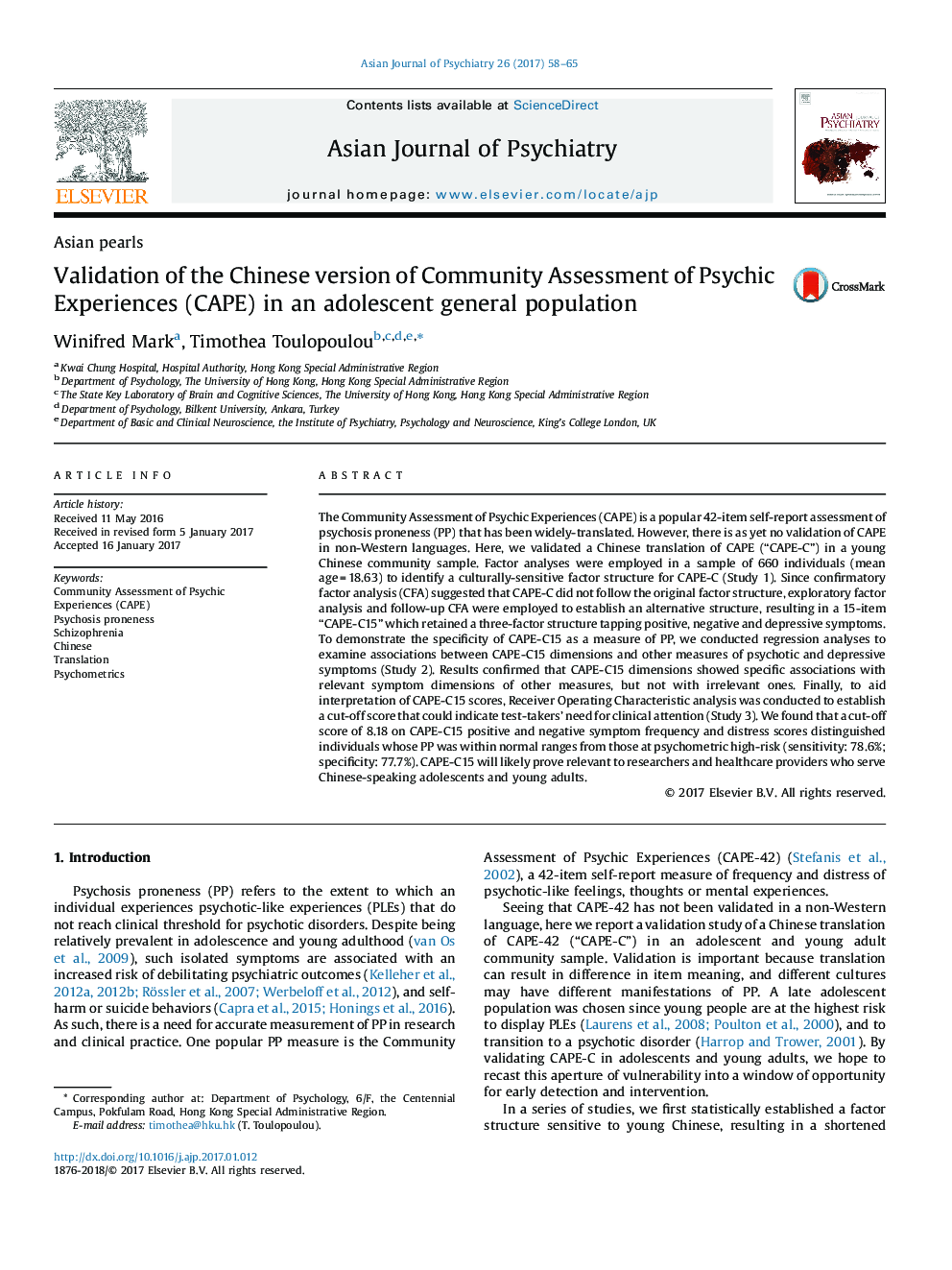| Article ID | Journal | Published Year | Pages | File Type |
|---|---|---|---|---|
| 4929755 | Asian Journal of Psychiatry | 2017 | 8 Pages |
â¢This is the first validation study of a Chinese “Community Assessment of Psychic Experiences” (CAPE).â¢A 15-item “CAPE-C15” tapping positive, negative and depressive symptoms was yielded.â¢CAPE-C15 has convergent-divergent validity and factorial validity.â¢Scoring above 8.18 on CAPE-C15 positive and negative scales suggests need for clinical attention.â¢CAPE-C15 is useful for researchers and clinicians serving Chinese-speaking youngsters.
The Community Assessment of Psychic Experiences (CAPE) is a popular 42-item self-report assessment of psychosis proneness (PP) that has been widely-translated. However, there is as yet no validation of CAPE in non-Western languages. Here, we validated a Chinese translation of CAPE (“CAPE-C”) in a young Chinese community sample. Factor analyses were employed in a sample of 660 individuals (mean age = 18.63) to identify a culturally-sensitive factor structure for CAPE-C (Study 1). Since confirmatory factor analysis (CFA) suggested that CAPE-C did not follow the original factor structure, exploratory factor analysis and follow-up CFA were employed to establish an alternative structure, resulting in a 15-item “CAPE-C15” which retained a three-factor structure tapping positive, negative and depressive symptoms. To demonstrate the specificity of CAPE-C15 as a measure of PP, we conducted regression analyses to examine associations between CAPE-C15 dimensions and other measures of psychotic and depressive symptoms (Study 2). Results confirmed that CAPE-C15 dimensions showed specific associations with relevant symptom dimensions of other measures, but not with irrelevant ones. Finally, to aid interpretation of CAPE-C15 scores, Receiver Operating Characteristic analysis was conducted to establish a cut-off score that could indicate test-takers' need for clinical attention (Study 3). We found that a cut-off score of 8.18 on CAPE-C15 positive and negative symptom frequency and distress scores distinguished individuals whose PP was within normal ranges from those at psychometric high-risk (sensitivity: 78.6%; specificity: 77.7%). CAPE-C15 will likely prove relevant to researchers and healthcare providers who serve Chinese-speaking adolescents and young adults.
